
Knapp Ranch (1962 to 1995)

^ ^ ^ Los Angeles Times, 25 April 1983
In the article, Frank said the property was originally homesteaded in 1896. This is the same year Annie Rose Briggs' half-brother, "Eddie" (Henry E. Woest), homesteaded in this area making it a high probability they are the same properties and the earliest buildings on the ranch were built by Henry E. Woest (who was a commercial bee keeper in the early 1900s).
The term Frank uses, Alliklik, is the original name for describing the Tataviam Indians and their language. The name fell into disuse because that name was deemed to be derogatory, so they changed the name to Tataviam which is the name commonly used today.
The reference to Frank's Swiss origins is not correct. Some records indicate a Swiss heritage but that was a cover because of the anti-German sentiment during the war. Frank was born in Austria in a town named Schwaz in the state of Tyrol (or Tirol).....the third-largest state in Austria. The largest town in the state of Tyrol is Innsbruck which is its capital.
The Knapp family immigrated to the USA from Austria in waves. Franz (Frank) John Knapp (senior) first came to the USA from Austria with his two sons in June 1903 (including Frank who was not yet 3 years old). However, the sons later returned to Austria and their father stayed behind in America. The whole family (wife, daughter, and two sons) returned in November 1910 to join their Franz Knapp Sr. in America. I believe they had 5 sons and 2 daughters. Their three eldest were born in Austria and came to the US as children (including Frank).
Frank Knapp's father, Franz (Frank) John Knapp Sr. walked across the country from Derry, Pennsylvania to California and settled in Owensmouth, California, where he built a house and became a naturalized US citizen.
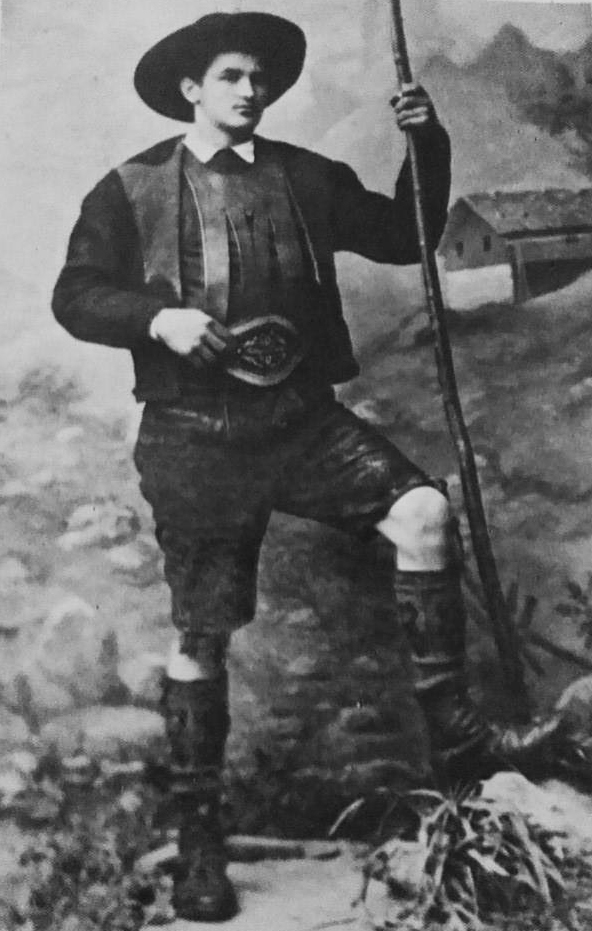
^ ^ ^ Franz ("Frank") John Knapp Sr.
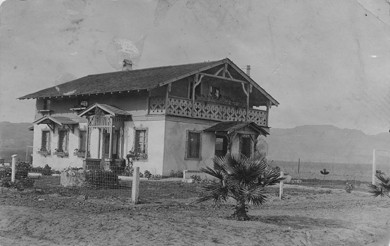
^ ^ ^ The Knapp family home in 1912 (located at Owensmouth Avenue and Cohasset Street in Canoga Park). It was one of the first houses in the area which was demolished in 1926. The name "Owensmouth" was designed to evoke an image of being at the mouth of the distant Owens River. This was the original name of the settlement that grew into the town of Canoga Park.
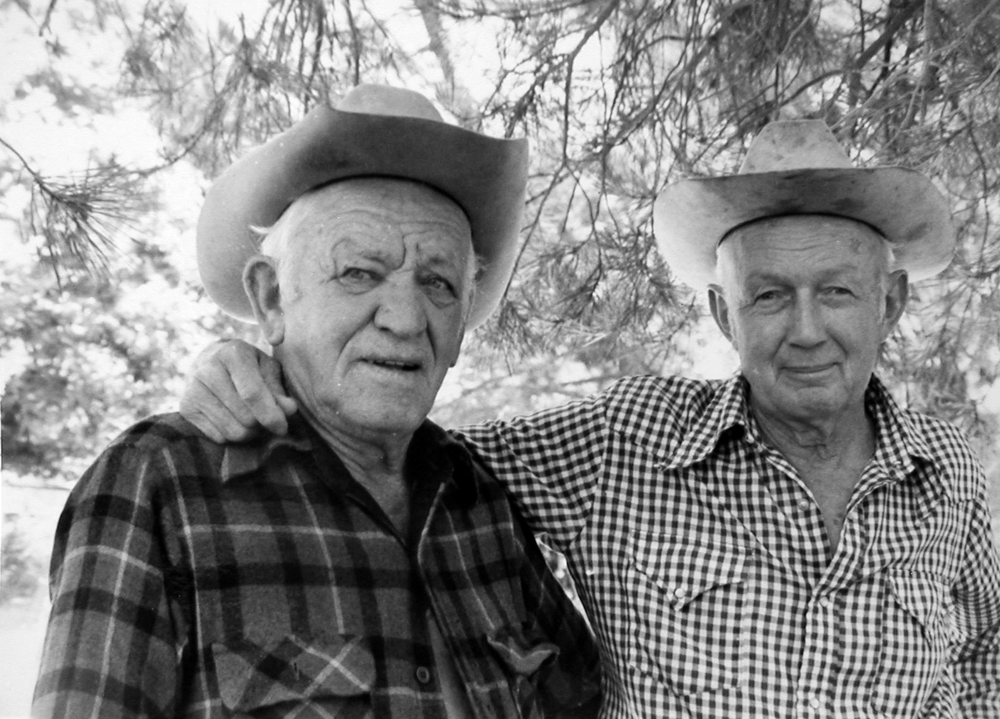
^ ^ ^ Photo of Frank Knapp on left copied from Donna Bostick's personal photo album (Donna lived on Knapp Ranch for many years)
The men bear a strong resemblance to each other suggesting the person on the right is one of Frank's brothers. They appear to be about the same age, so this could be Alfonso Alfred Knapp who was two years younger. According to the part-time foreman at the ranch, Ron Abramchuk (nickname "Bart"), Frank originally bought Knapp Ranch with a partner. They planned to make the ranch into a hunting lodge and they discussed all sorts of ideas about how to set it up. Ron Abramchuk said that the other partner in the venture died a few years later and Frank bought out his partner's half share (for $40,000) and became the sole owner. Frank's partner might have been his younger brother, Alfonso Knapp (1902 - 1968). They were more or less the same age - just two years difference. Sadly Frank's brother, Alfonso, died 5 or 6 years after the purchase of the ranch in 1962. So this speculation is consistent with the man on the right in the photo being Frank's younger brother, Alfonso Knapp (but this needs verification).
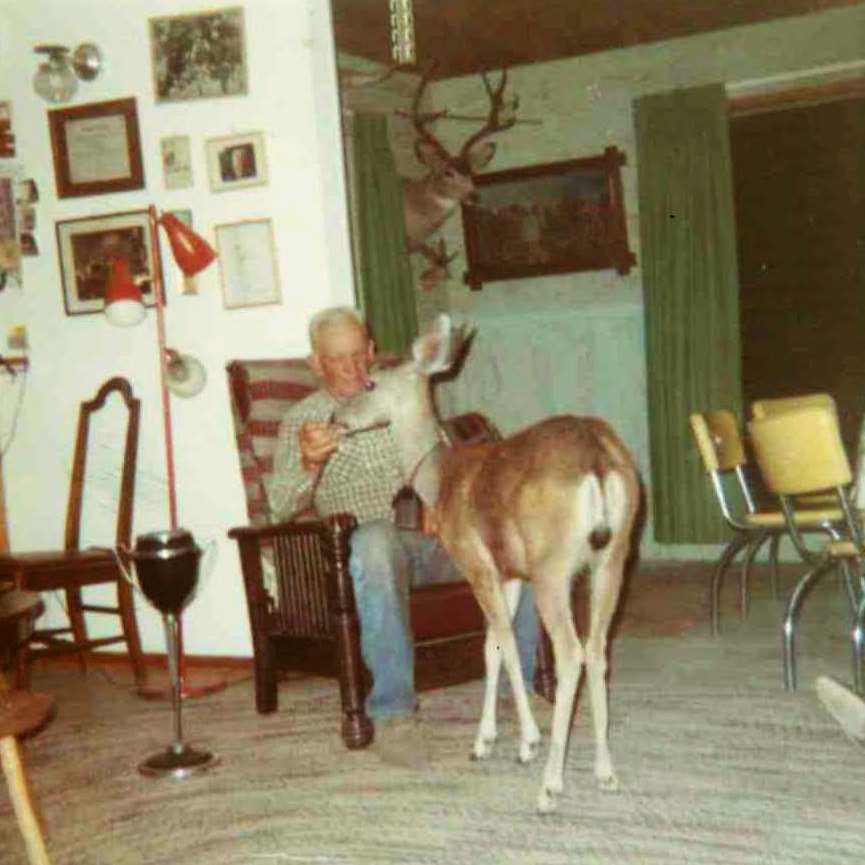
Ingrid Burgess, a visitor at the ranch, wrote: "Frank had a doe that he got as a fawn. The rangers didn't object to him having it, may have even given it to him. It was sick and had diarrhea and "Diarrhea" became the doe's name. It would freely saunter into the house and loved to eat cigarette butts and jelly beans. "Diarrhea" had a son named "Pete", a second offspring was named "Repeat". "Pete" or "Repeat" once reared up against my daughter and pinned her against the house. Catherine still talks about this as the scariest experience in her life. (The deer were safeguarded during hunting season)."
The Knapp Ranch (formally Kelly Ranch) was thought to have been the location of the Tataviam village of Cuecchao (Quechao), which was "depopulated" by Spanish missionaries and soldiers starting in 1811.
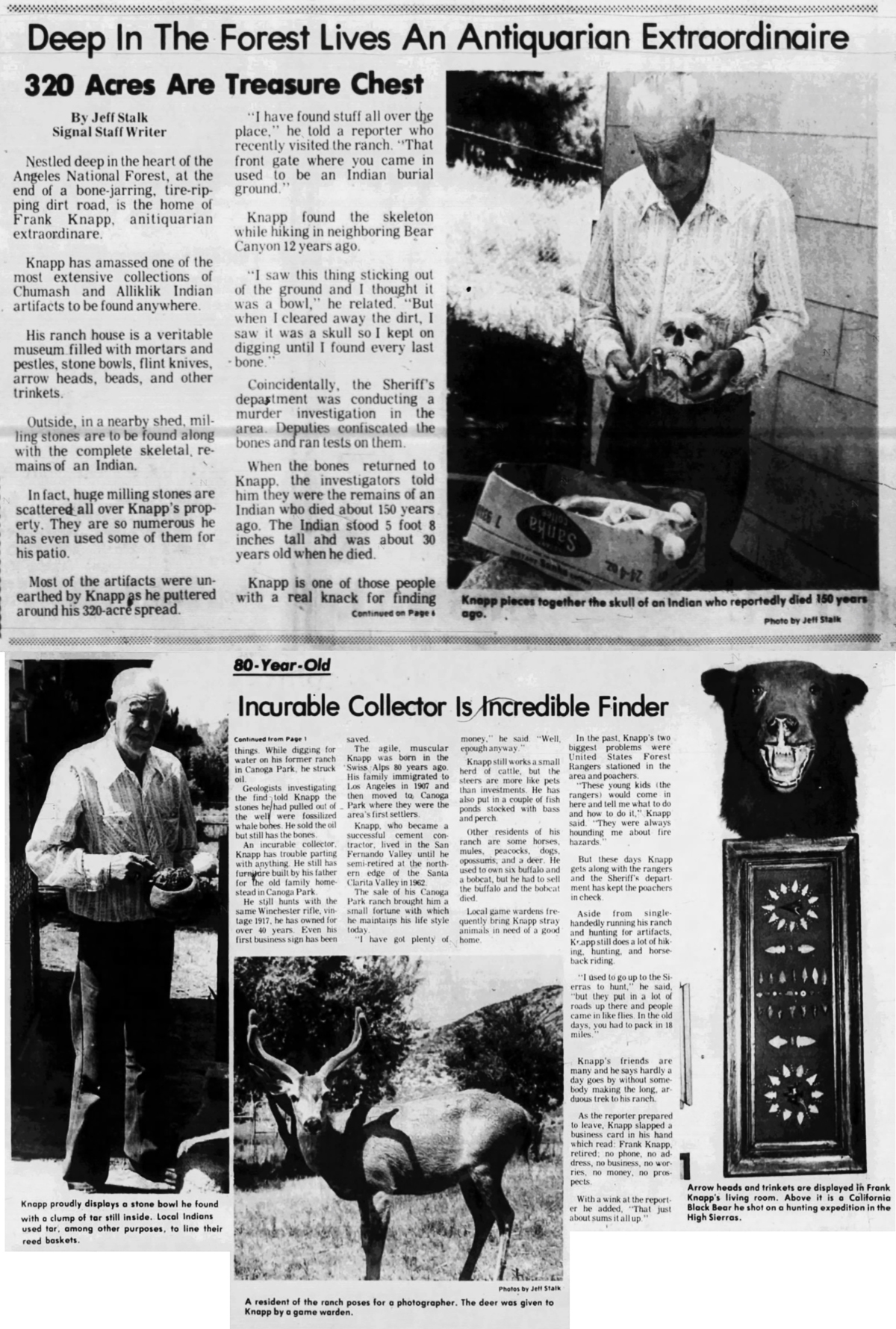
^ ^ ^ The Newhall Signal and Saugus Enterprise Sunday 29 June 1980
Here is the early history of the man who created the renowned, Knapp Ranch.....
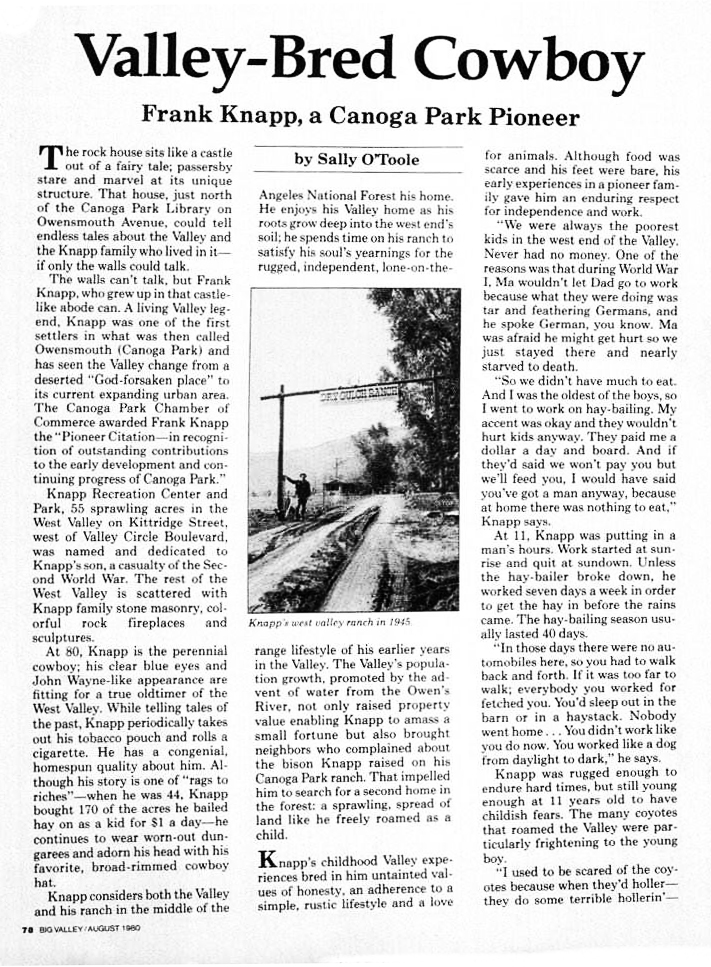
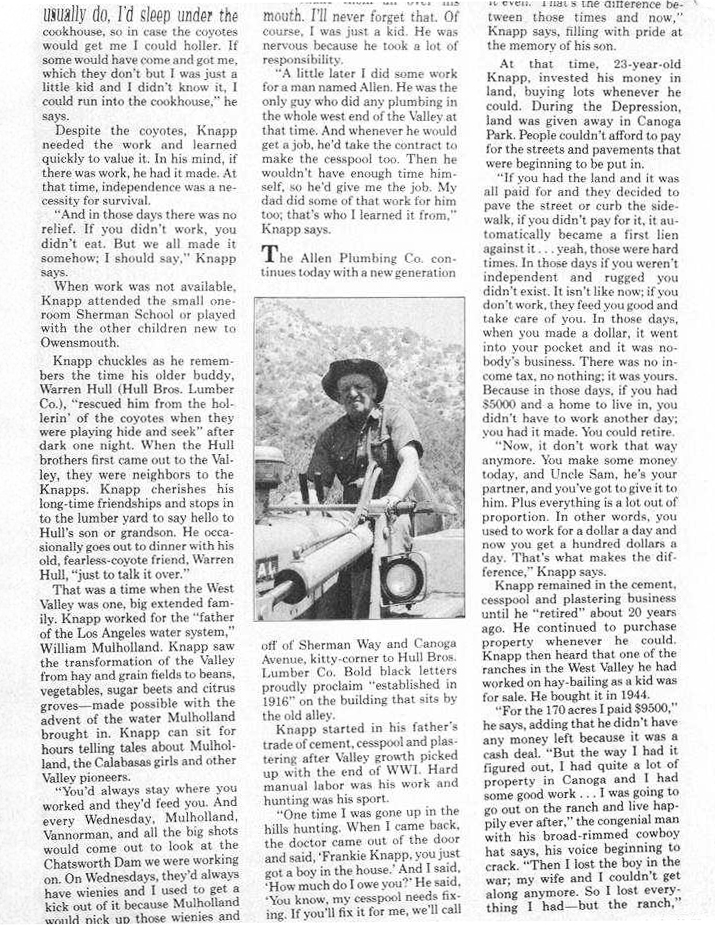
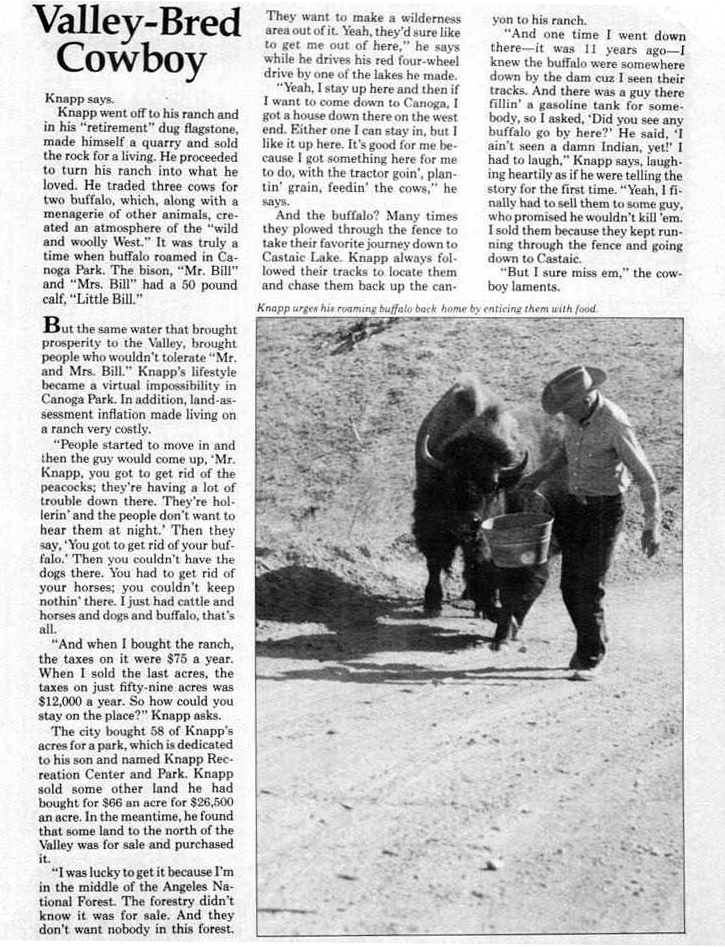
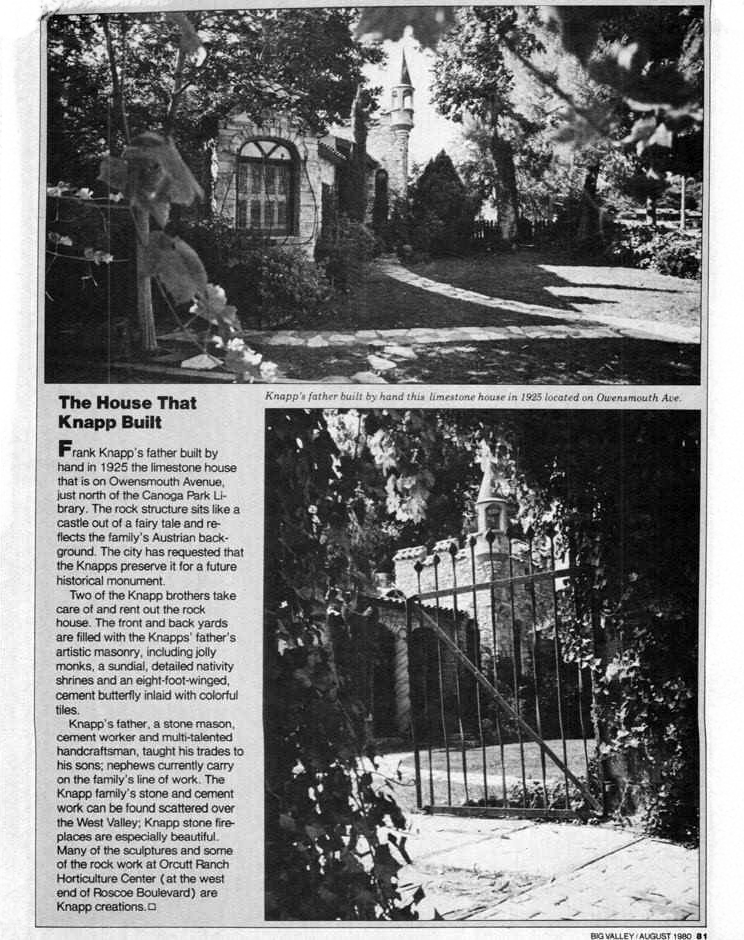
^ ^ ^ Big Valley, August 1980
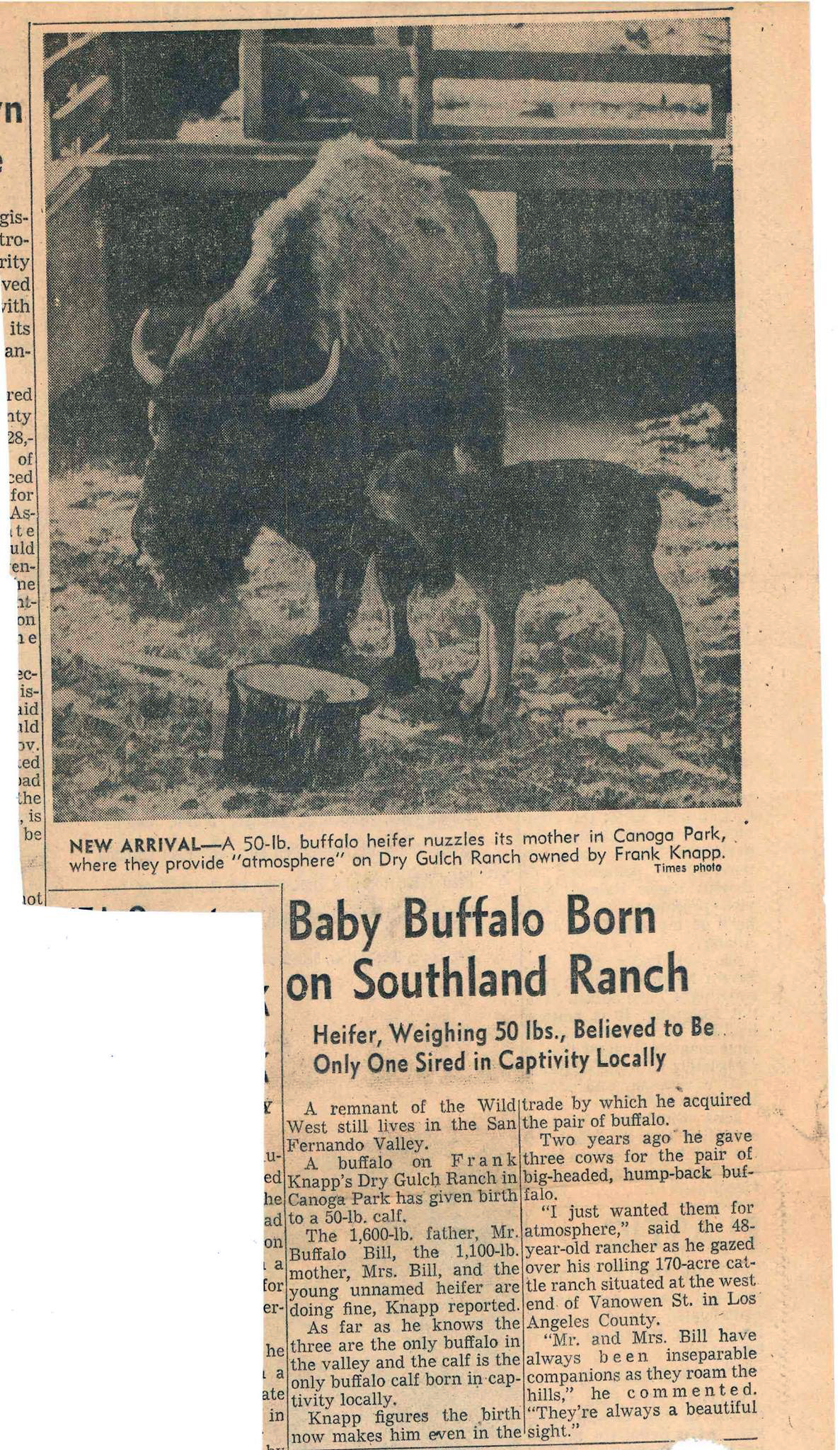
^ ^ ^ Los Angeles Times, 10 June 1959
![]()
Peter Gray
telephone: +1 (661) 242-1234